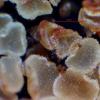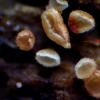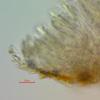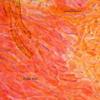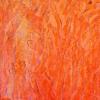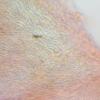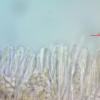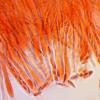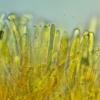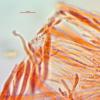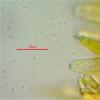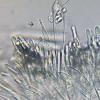
24-04-2024 21:54
Bonjour, J'ai trouvé ce Lasiobolus sur laissées

23-04-2024 15:18
 Lothar Krieglsteiner
Lothar Krieglsteiner
... but likely a basidiomycete. I hope it is o.k.

23-04-2024 13:17
 Edouard Evangelisti
Edouard Evangelisti
Bonjour à tous, Je viens de récolter ce que je

23-04-2024 21:49
Ethan CrensonHello all, A friend recently found this orange as

22-04-2024 11:52
 Zuzana Sochorová (Egertová)
Zuzana Sochorová (Egertová)
Hello,I made a loan of a collection of Microstoma

11-01-2022 16:36
Hi does anyone have a digital copy of Raitviir A (

22-04-2024 20:38
 Miguel Ángel Ribes
Miguel Ángel Ribes
Good afternoon.Does anyone know this anamorph?It g

19-04-2024 14:28
Cudoniella tenuispora: Distinctive macro and habit
Small gregarious disco
Marek Capoun,
08-04-2021 19:41
 Hello everybody, I need help with the determination of a small gregarious disco on the bottom side of a fallen rotten decorticated branch of Quercus. Collected 2.4.2021, altitude cca 200 meters.
Hello everybody, I need help with the determination of a small gregarious disco on the bottom side of a fallen rotten decorticated branch of Quercus. Collected 2.4.2021, altitude cca 200 meters.Ascomata less than 1 mm on average, shortly stalked, in youth whitish or creamy white, later turn red during the maturation or when damaged.
Medullary excipulum with textura intricata, ectal excipulum with textura porrecta (really?)
Asci IKI+ with croziers, max. 60 µm long. Paraphyses are cylindrical, with VBs at the lower part only (dead material). Hairs sparse, distinctly narrowed on the top. Ascospores hyaline, one–celled, fusiform or cylindrical, however one end is wider, Me = 7.3 × 2.9 µm ; Qe = 2.5.
Thanks for your help.
Marek
Mirek Gryc,
08-04-2021 19:53
Re : Small gregarious disco
Hi Marek
I do not have a certainty but I think you should compare with Calycina subhyalinula / hyalinula.
I see in your photos, a few features suitable for these species.
Mirek
Hans-Otto Baral,
08-04-2021 20:27

Re : Small gregarious disco
Difficult to say. The thick-walled warted hairs on the 6th pic are not part of the fungus I think.
A Calycina seems quite probable, the red colour change is typical. C. hyalinula isn't a bad idea indeed. In that species the blue reaction is restricted to the lower part of the apical wall thickening. Are there more such photos showing the ring?
I am a bit unsure what these apically narrowed elements are. perhaps phialides forming small conidia?
Zotto
Marek Capoun,
08-04-2021 20:45

Re : Small gregarious disco
Thanks, Mirek, you gave me very good direction, I saw your photos on the site Grzyby Puszczy Knyszynskiej. It fits quite well.
M.
M.
Marek Capoun,
08-04-2021 21:17

Re : Small gregarious disco
Thanks, Zotto.
The thick-walled warted hairs on the 6th photo is some rubbish, of course.
The restriction of the blue reaction to the lower part of the apical wall thickening - do you mean something like this (1st pic)?
And these narrowed elements - you have some photos of the same structure on your disk (e.g. by Mirek Gryc - 2nd pic).
Mirek suggests C. hyalinula or C. 'subhyalinula'. What is the difference?
Marek
The thick-walled warted hairs on the 6th photo is some rubbish, of course.
The restriction of the blue reaction to the lower part of the apical wall thickening - do you mean something like this (1st pic)?
And these narrowed elements - you have some photos of the same structure on your disk (e.g. by Mirek Gryc - 2nd pic).
Mirek suggests C. hyalinula or C. 'subhyalinula'. What is the difference?
Marek
Hans-Otto Baral,
08-04-2021 22:11

Re : Small gregarious disco
Your photo of amyloid asci shows very well what I meant! And the phialide is pretty clear.
I am unaware of a species called subhyalinula, but I must admit I created this name for my folder. The reason was apparently the position of the amyloid ring, at apex or at base of thickening
. In the Orbilia monograph p. 1674 I have a short note on Orbilia hyalinula which I consider a Calycina or perhaps a Cistella with smooth hairs.
Marek Capoun,
08-04-2021 22:50

Re : Small gregarious disco
Well, everything is clear now except for one thing: may I call it C. hyalinula or C. aff. hyalinula?
Hans-Otto Baral,
09-04-2021 08:33

Re : Small gregarious disco
I remember the type has the ring at the top, so yours should be aff. hyalinula.
Marek Capoun,
09-04-2021 08:40

Re : Small gregarious disco
Good, the topic is exhausted now.
Thank you so much.
Greetings,
Marek
Thank you so much.
Greetings,
Marek

